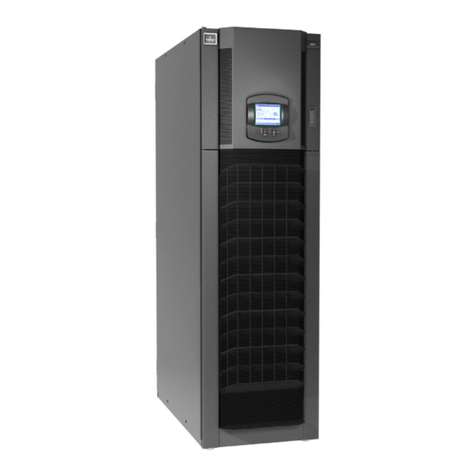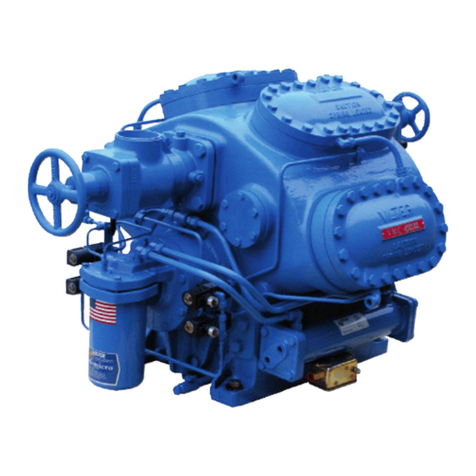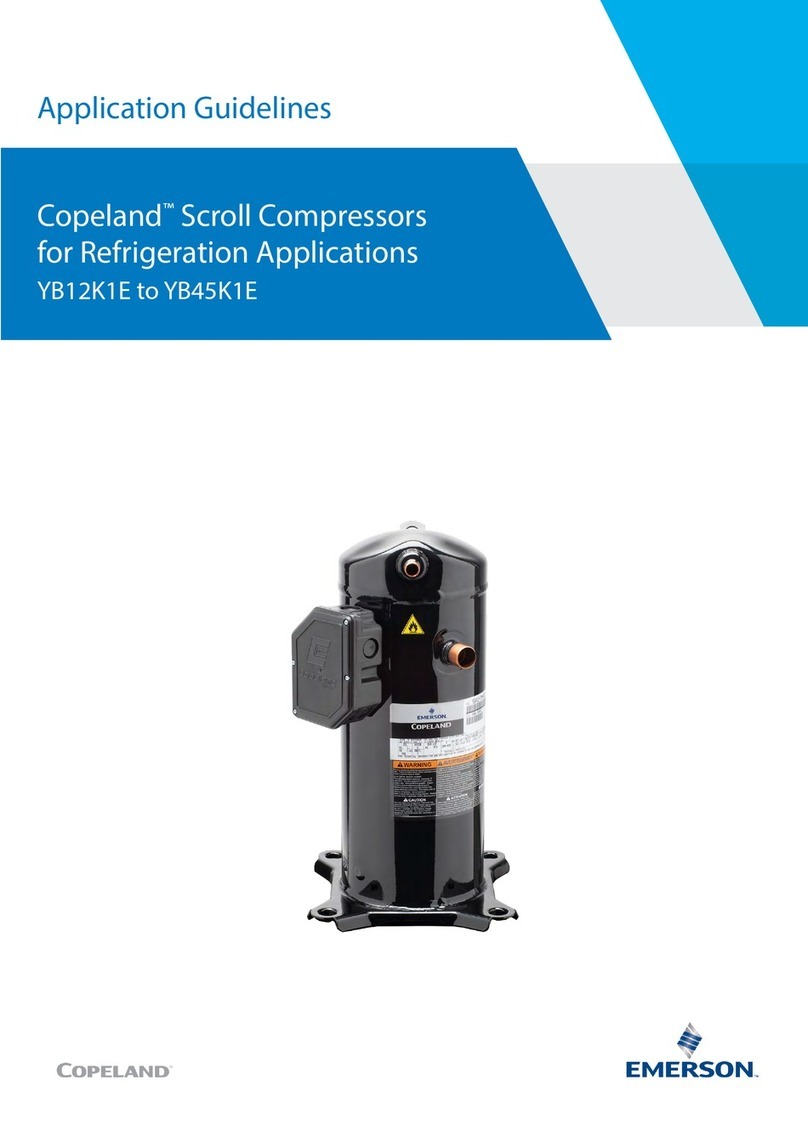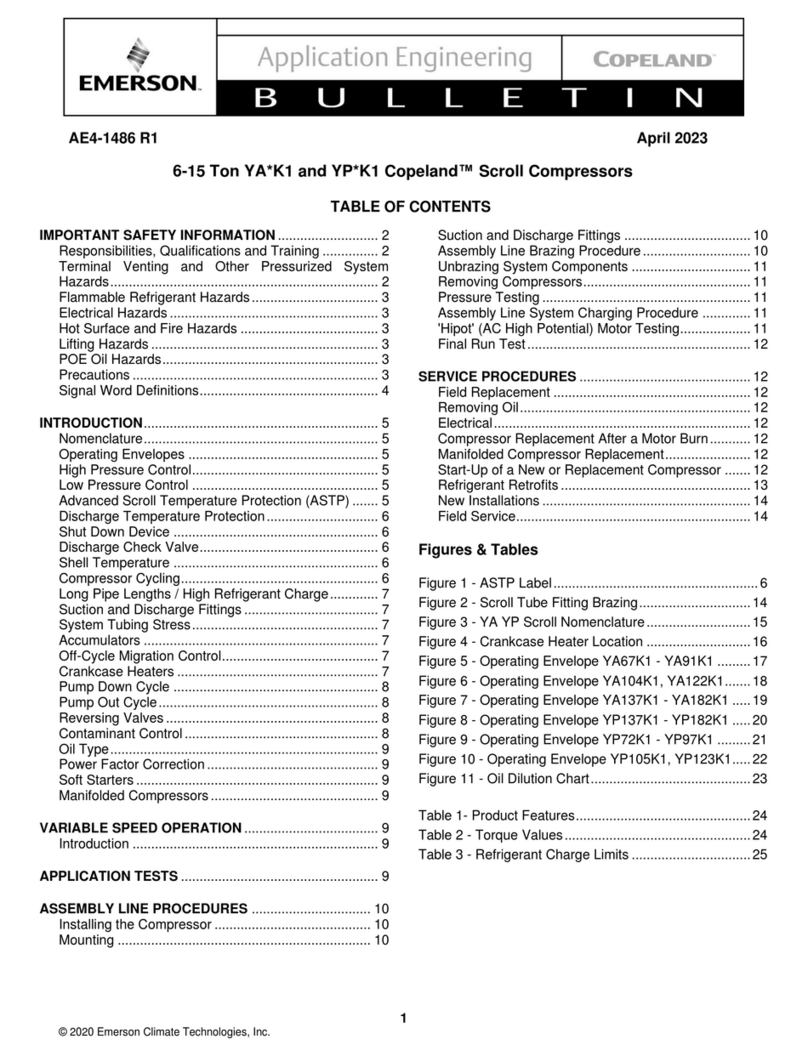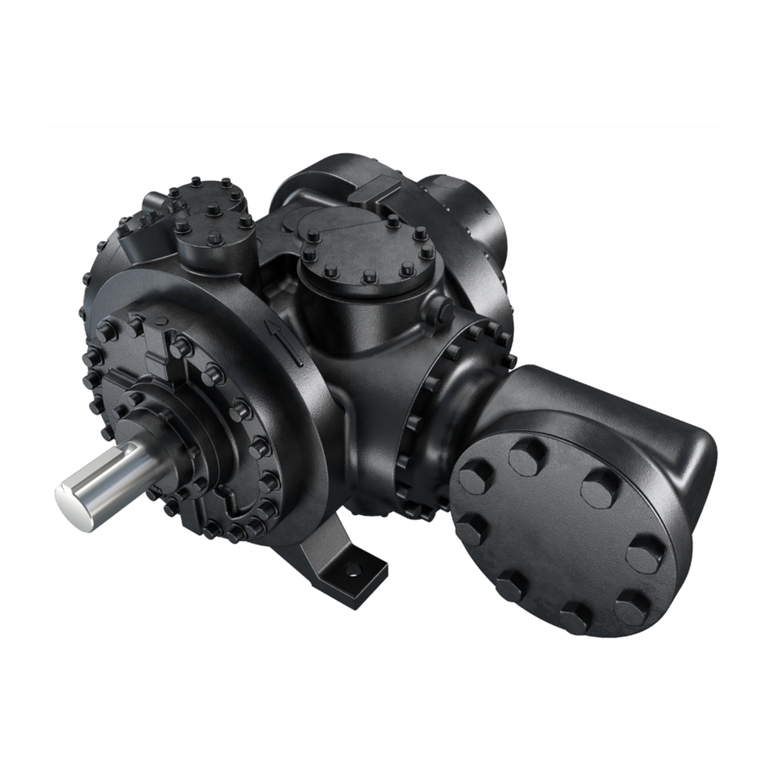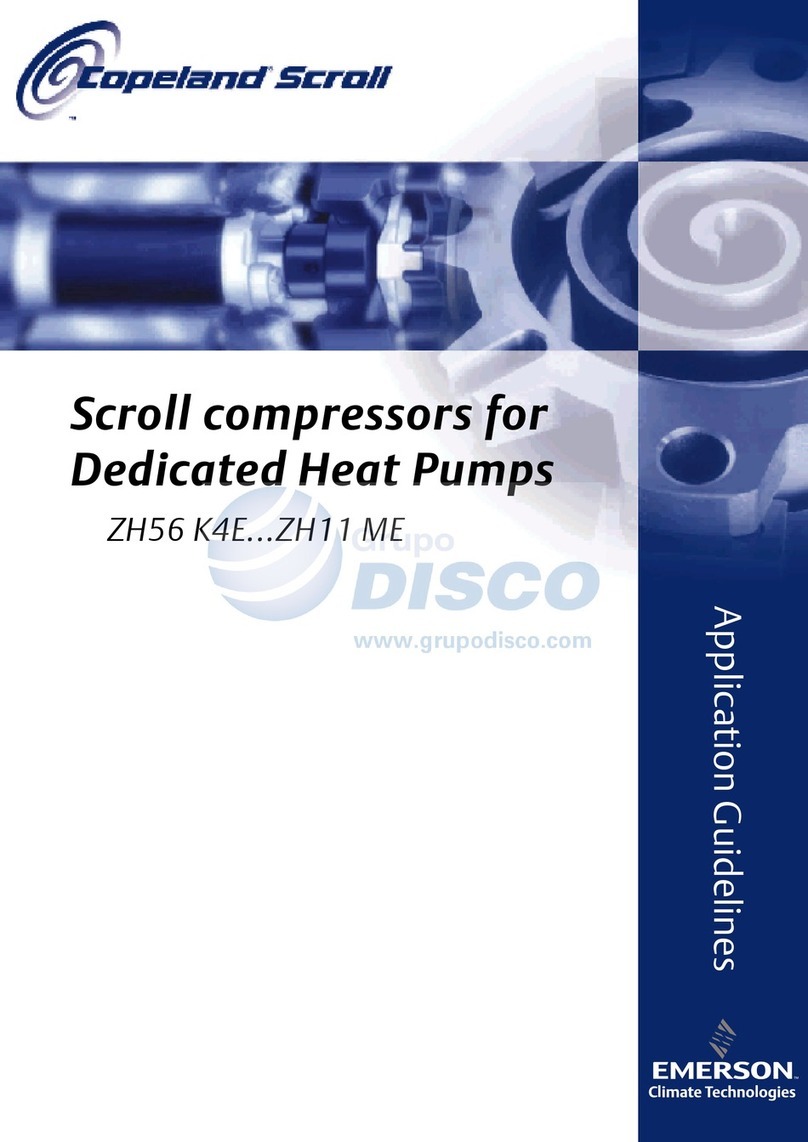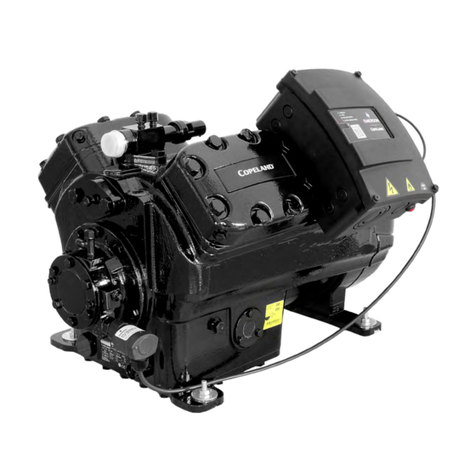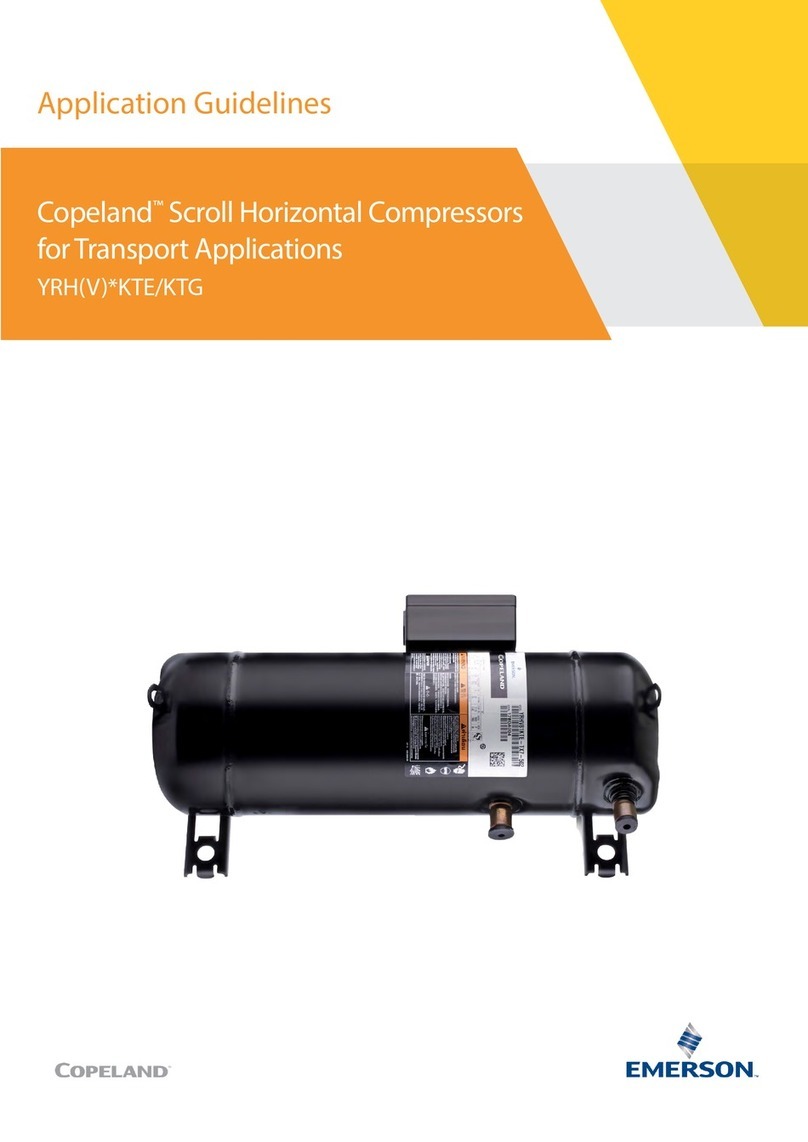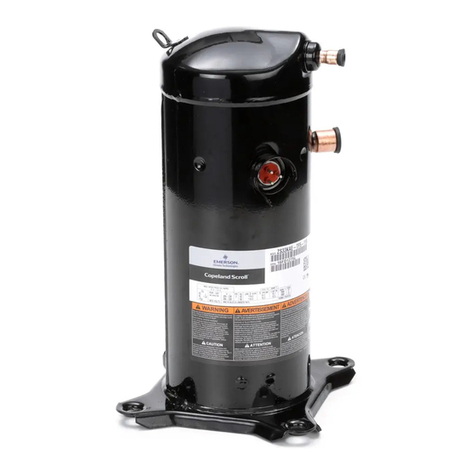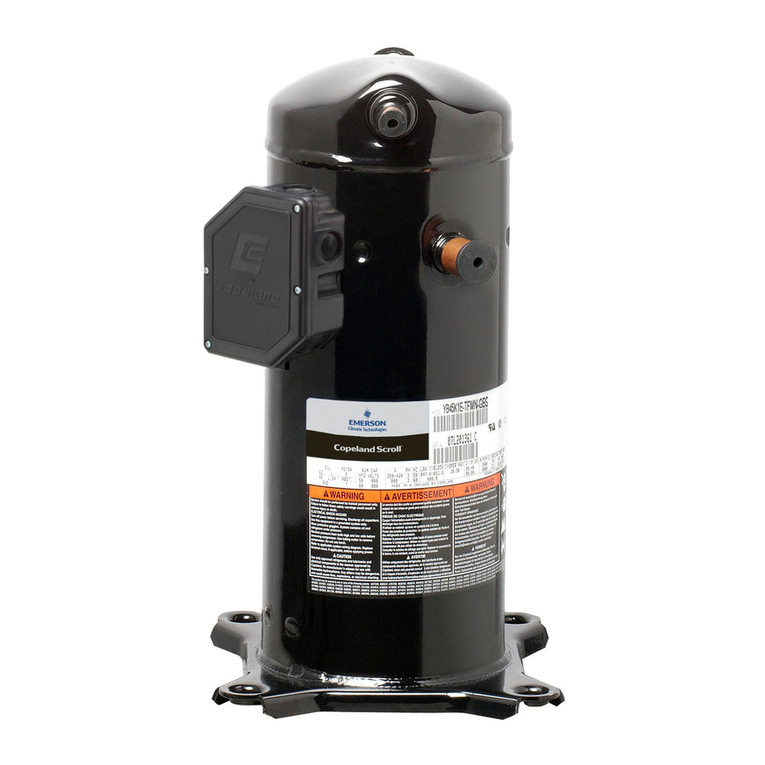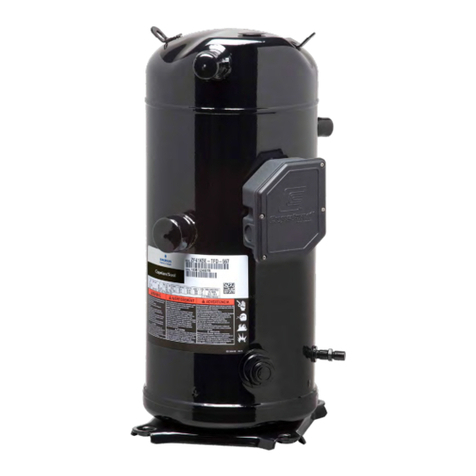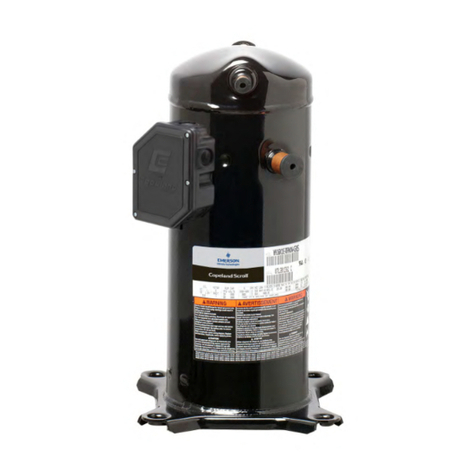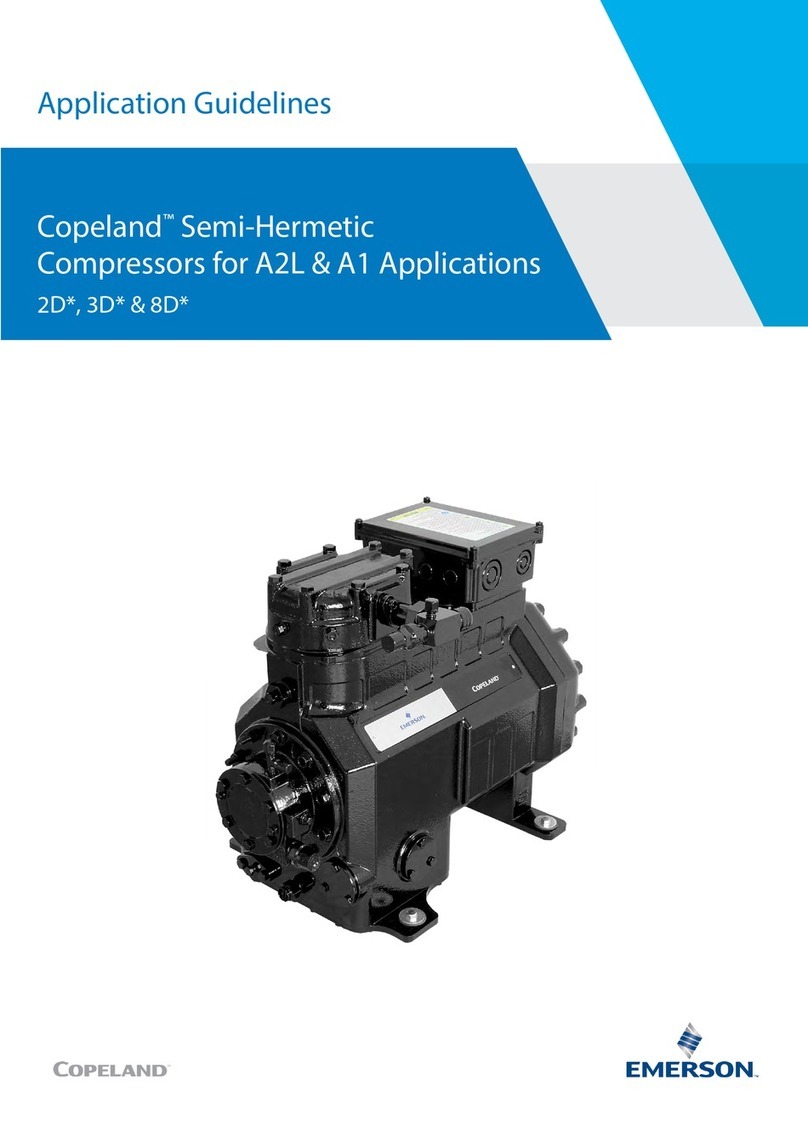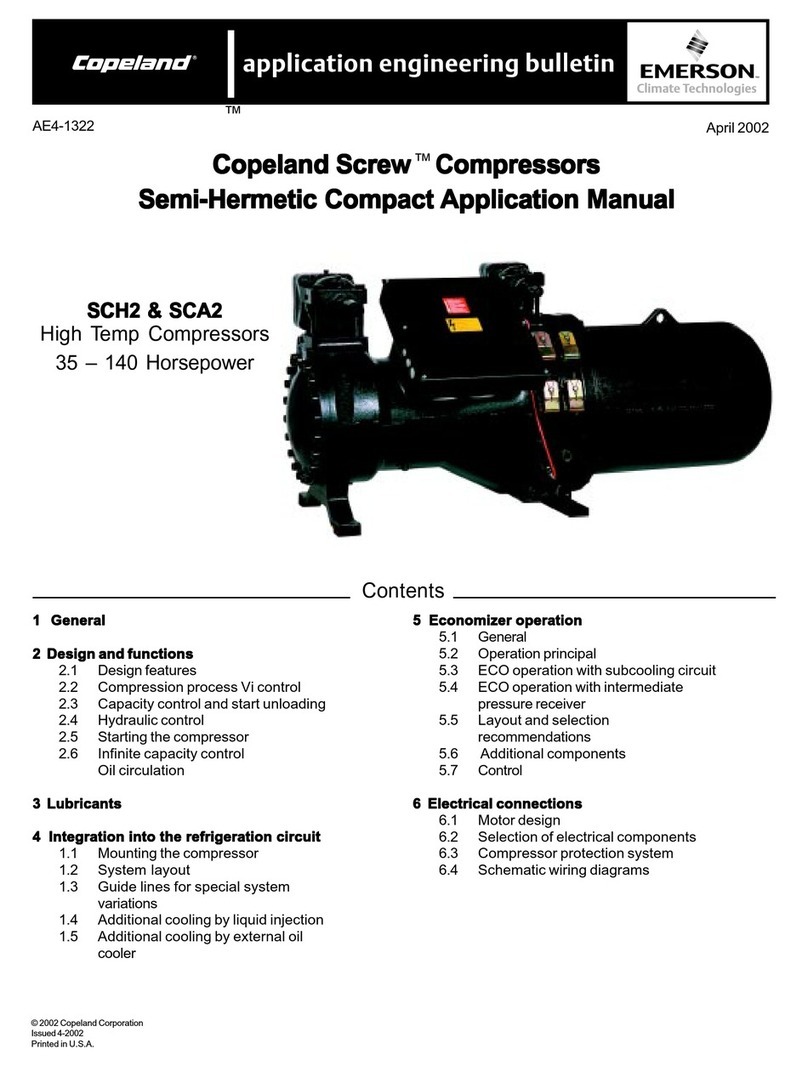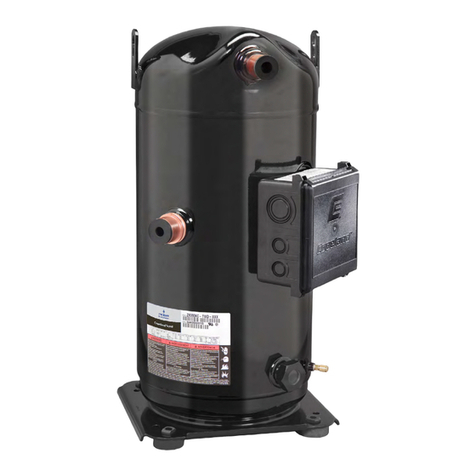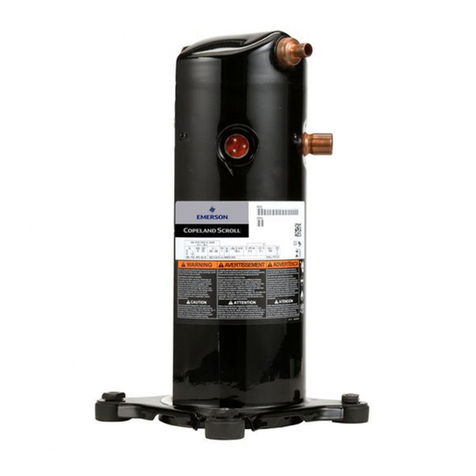
9
© 2015 Emerson Climate Technologies, Inc.
AE4-1331 R7
over this amount. If the system contains an accumulator
the manufacturer of the accumulator should be
consulted for a pre-charge recommendation.
Other system components such as shell and tube
evaporators can trap signicant quantities of oil and
should be considered in overall oil requirements.
Reheat coils and circuits that are inactive during part of
thenormalcyclecantrapsignicantquantitiesofoilif
system piping allows the oil to fall out of the refrigerant
owintoaninactivecircuit.Theoillevelmustbecarefully
monitored during system development, and corrective
action should be taken if compressor oil level falls below
the top of the lower bearing bracket for more than two
minutes. The lower bearing bracket weld points on the
compressor shell can be used as a low-oil-level marker.
Discharge Mufers
Flow through Copeland Scroll compressors is semi-
continuous with relatively low pulsation. External
mufers, where they are normally applied to
piston compressors today, may not be required for
Copeland Scroll compressors. Because of variability
between systems, however, individual system tests
should be performed to verify acceptability of sound
performance.Whennotestingisperformed,mufers
arerecommendedinheatpumps.Ahollowshellmufer
such as the Emerson Flow Controls APD-1 or APD-054
willworkquitewell.Themufersshouldbelocateda
minimum of six inches (15 cm) to a maximum of 18
inches (46 cm) from the compressor for most effective
operation. The farther the mufer is placed from the
compressor within these ranges the more effective it
may be. If adequate attenuation is not achieved, use a
muferwithalargercross-sectionalareatoinlet-area
ratio. The ratio should be a minimum of 20:1 with a
30:1ratiorecommended.Themufershouldbefrom
four to six inches (10 -15 cm) long.
Air Conditioning System Suction Line Noise and
Vibration
Copeland Scroll compressors inherently have low sound
and vibration characteristics. However, the sound and
vibration characteristics differ in some respects from
those of reciprocating compressors. In rare instances,
these could result in unexpected sound complaints.
One difference is that the vibration characteristics of the
scroll compressor, although low, include two very close
frequencies, one of which is normally isolated from the
shell by the suspension of an internally suspended
compressor. These frequencies, which are present in all
compressors, may result in a low level “beat” frequency
that may be detected as noise coming along the suction
line into a house under some conditions. Elimination
of the “beat” can be achieved by attenuating either
of the contributing frequencies. The most important
frequencies to avoid are 50 and 60 Hz power supply line
and twice-line frequencies for single-phase compressors
and line frequency for three phase compressors. This is
easily done by using one of the common combinations
ofdesigncongurationdescribedinTable 3. The scroll
compressor makes both a rocking and torsional motion,
and enough exibility must be provided in the line to
prevent vibration transmission into any lines attached to
the unit. In a split system the most important goal is to
ensure minimal vibration is all directions at the service
valve to avoid transmitting vibrations to the structure to
which the lines are fastened.
A second difference of the Copeland Scroll compressor
is that under some conditions the normal rotational
starting motion of the compressor can transmit an
“impact” noise along the suction line. This may be
particularly pronounced in three-phase models due to
their inherently higher starting torque. This phenomenon,
like the one described previously, also results from the
lack of internal suspension, and can be easily avoided
by using standard suction line isolation techniques as
described in Table 3.
The sound phenomena described above are not usually
associated with heat pump systems because of the
isolation and attenuation provided by the reversing
valve and tubing bends.
Mounting Parts
All ZP16-44K3 and ZP34-61K5 compressors
have extruded grommet mounting holes, so the
grommet must have a relief cut into the main body to
accommodate the down-turned lip of the hole. Table
4lists the mounting parts kits to be used with these
compressors. Many OEM customers buy the mounting
parts directly from the supplier, but Emerson’s
grommet design and durometer recommendation
should be followed for best vibration reduction through
the mounting feet. Please see AE4-1111 for grommet
mounting suggestions and supplier addresses.
Single Phase Starting Characteristics
Start assist devices are usually not required, even if a
system utilizes non-bleed expansion valves. Due to the
inherent design of the Copeland Scroll compressor, the
internal compression components always start unloaded
even if system pressures are not balanced. In addition,
since internal compressor pressures are always
balanced at startup, low voltage starting characteristics
are excellent for Copeland Scroll compressors. The
starting Locked Rotor Amperage (LRA), also referred
to as inrush current, is normally six or more times higher
